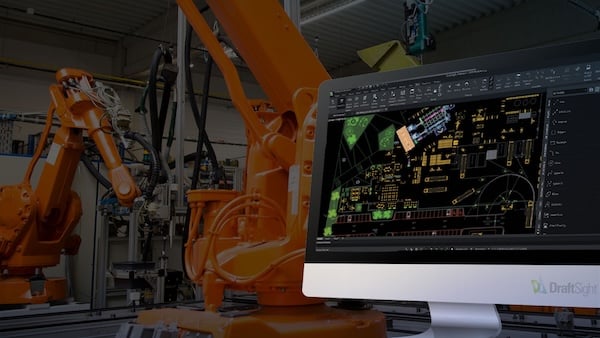The AEC industries are experiencing a seismic shift in how professionals acquire and apply new skills. Traditional training methods such as classroom instruction and extensive self-paced learning materials are often ineffective in today’s fast-paced workplace, with constantly evolving technology and tight project schedules.

Image source: JOURNEY STUDIO7/stock.adobe.com.
To capture AEC industry trends in technology training, Cadalyst conducted extensive research in cooperation with Eagle Point Software, surveying decision makers across four key technology personas: Construction Project Managers, BIM/VDC Leaders (building information modeling/virtual design and construction), IT Leaders (information technology), and HR Leaders (human resource). Cadalyst used a combination of online surveys and its proprietary TwintelligenceTM methodology, an AI-based analysis tool, for this detailed research. Decision makers answered 18 structured questions spanning topics such as return on investment (ROI) proof, learning-format preference, budget dynamics, integration concerns, and automation readiness.
Based on the research, four critical trends emerged that are fundamentally reshaping training approaches in AEC firms:
• A micro-learning approach;
• Integration-focused learning platforms;
• ROI-driven training investments; and
• Personalized learning paths.
This white paper highlights key aspects of these and other trends.

The Micro-Learning Revolution
When asked to identify the biggest challenge faced by their organization in continuous learning, AEC leaders said time limitations are a major concern. Approximately 74% of Construction Project Managers and 60% of BIM/VDC Leaders cited “lack of time for training” as their top challenge. The challenge in keeping content current with ever-evolving technology was also prevalent, with 66% of IT Leaders and 54% of BIM/VDC Leaders identifying this as a top concern. The combination of time constraints and evolving technology means firms are seeking more compact, fluid training, such as 5-minute micro-learning modules that integrate directly into daily workflows and can be easily updated to reflect current technology.
The trend toward micro-learning was further supported by a comparison of digital learning vs. in-person training at AEC firms. A majority of respondents cited digital training as the primary means of workforce training, meaning at least 50% of training is conducted digitally. Only 2 to 6% of AEC leaders cited in-person learning as the primary means of workforce training.

Integration-Focused Learning Platforms
Technology training should be integrated with AEC software platforms, based on survey responses, meaning that as users are working they should be able to easily access how to do something in the moment. When asked to identify key e-learning features, every persona selected integration with key software such as Autodesk Construction Cloud (ACC) as a top requirement, and 70 to 80% ranked it above all other features. In addition to ACC, most firms use a variety of design tools such as AutoCAD, BIM Collaborate Pro, Revit, as well as project management tools such as Autodesk Construction Cloud and enterprise resource planning (ERP) systems in day-to-day operations, so training integrated in key workflows is highly attractive to managers and employees alike.

As part of the desire for integrated training, AEC leaders prefer bite-sized modules that launch inside project apps and can run offline. Respondents also indicated preference for single sign-on and open application programming interfaces (APIs) that enable customization for specific workflows.
Detailed analytics and reporting also ranked highly, with a majority of respondents citing this as an important feature. In addition to integrated training, AEC leaders want to measure and monitor training effectiveness and coverage.
AEC leaders also have a keen interest in security issues. Diverse toolsets and potential cyber-security issues make “one source of learning truth” a desirable feature in managing training programs. Some respondents cited a need to comply with the Systems and Organization Controls 2 (SOC 2), a security framework developed by the American Institute of Certified Public Accountants that guides organizations in protecting customer data from unauthorized access and other vulnerabilities. One IT leader commented: “No platform gets past procurement unless it’s SOC 2-certified and exposes clean APIs into AutoCAD and BIM 360 — security first, content second.”

ROI-Driven Training Investments
Research indicates a new imperative is emerging for training programs — a need to demonstrate measurable impact, with 66% of BIM/VDC leaders and 70% of IT leaders citing “difficulty proving ROI” as the biggest obstacle to increasing training investment. Budget constraints were also cited as a significant obstacle, meaning firms need to invest wisely in training to maximize available funding.
AEC firms generally navigate tight profit margins and project-by-project financial accountability, driving demand for proof that training is beneficial — in areas such as avoiding rework, saving time, and reducing turnover. Without solid payback metrics, firm leaders are less likely to invest in training, often relegating it to a discretionary line item.
Respondents emphasized the importance of ROI measurement. According to one Construction Project Manager: “Design-team training hours hit our critical path; without a clear ROI model the finance guy cuts the line item at pre-con.” A BIM Manager noted: “Finance wants hard numbers on rework reduction before upping the training budget.”

Eagle Point’s Pinnacle Series allows you to review how to complete an action or learn a tool on the fly from within your design program. Image source: Eagle Point.
The Personalization Imperative
Along with the desire for more compact, integrated training and demonstrated ROI, firms also value personalized, customizable content. As shown in a previous graph highlighting desirable features of e-learning, 74% of HR leaders prioritize personalized learning paths as a top platform feature. Similarly, 66% of HR leaders preferred personalized learning approaches for addressing generational preferences, and 74% cited multiple training formats. These figures collectively represent a fundamental shift from one-size-fits-all training to adaptive, role-specific learning experiences.
Looking forward, most AEC leaders expressed interest in more personalized learning. When asked to rate the likelihood of exploring a new personalized learning platform, a majority of AEC leaders said they would either be likely or very likely to do so (a score of either 4 or 5 on a scale of 1 to 5).

Other Key Takeaways
In addition to the four key trends, AEC leaders identified several other areas where new approaches to training will be needed:
• Accelerating digital skill growth: Technologies such as BIM, AI (artificial intelligence), automation, and AR/VR (augmented reality/virtual reality) are transforming the AEC industry, and firms are witnessing widening capability gaps. Nearly 50% of respondents report capability gaps growing in these areas, and more than 50% prioritize structured re-skilling. The pain is particularly acute in specialty trades and tech-heavy roles.
• Immersive AR/VR: Specific to AR/VR, roughly one-third of BIM/VDC leaders identified immersive AR/VR simulations as the single most impactful L&D (learning and development) trend for the next 12 to18 months — triple the interest expressed by any other persona. These leaders already manage 4D/5D model walk-throughs and drone scans, so VR training seems to be a natural extension, not a novelty.
• Performance-based assessments: Nearly 70% of IT leaders simultaneously demand detailed analytics and cite ROI verification as the top budget gate. AEC leaders want demonstrated benefits and documentation via tools such as dashboards that link learning to project KPIs (key performance indicators) such as clash reduction.

Addressing Training Needs
To accommodate the shift in construction technology training, AEC firms should partner with an experienced training organization. By working with a partner such as Eagle Point Software, firms can develop customized, personalized training to address the challenges identified by the survey and other challenges unique to the AEC industry.
Eagle Point’s Pinnacle Series is a comprehensive applied learning solution specifically designed for the AEC, product design, and manufacturing industries. As a customizable training platform, it can help firms and employees efficiently learn new skills and sharpen current skills — improving efficiency and productivity, while reducing rework and employee turnover. With a comprehensive, agile training program, AEC firms will be better equipped to harness the power of new technologies and improve project outcomes.
***
This article was sponsored by Eagle Point Software.






Share This Post